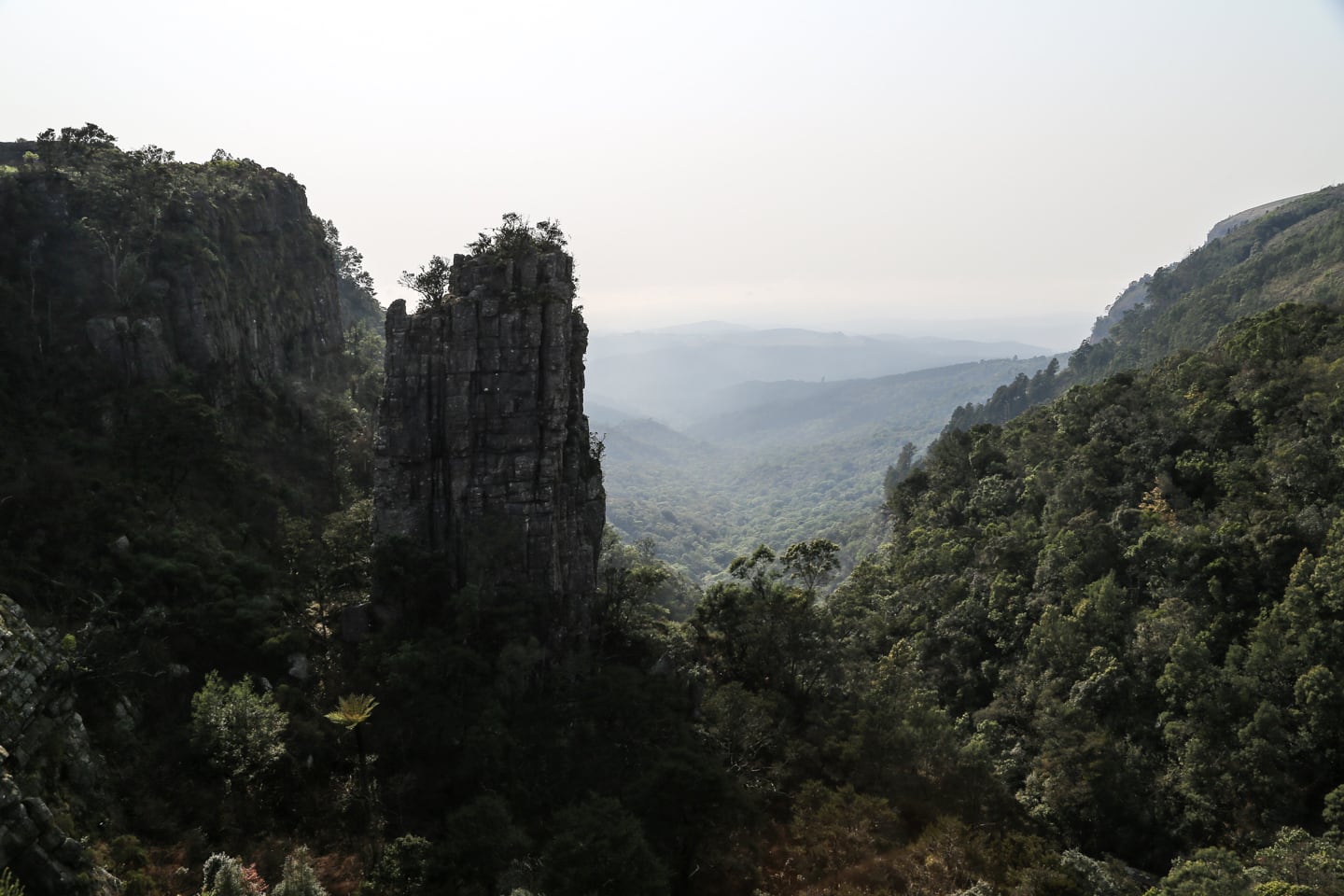
September 30th. Last day in South Africa. Not an arbitrary date…sort of. September 30th is the first date the Mozambican government will allow us to enter their fair land. I picked this date…sort of.
When we were planning this trip a few months back, we had actually planned on entering Moz about a week earlier than this. At the time, we had airline tickets in and out of Turkey in two days, and didn’t plan on staying in South Africa longer than 30 days. We also wanted to get the bulk of our Mozambique travel accomplished prior to the general elections on October 15th, given the political violence that had destabilized the country over the past year. While completing the visa paperwork for Moz, however, I misinterpreted the way they calculate validity of the visa and duration of stay.
I knew that the visa would be valid for 90 days, and that we could stay in the country a total of 30 days without renewing our visa (for a hefty sum). This would not be a problem. Unless you’re working in Moz, 30 days is more than enough. I had read somewhere that the validity of the visa begins the day it is issued. This is not unusual. What this means is that you must enter and leave the country within 90 days of the time you receive your visa. We applied in Washington, DC before leaving for Turkey. Therefore, the timing would not be a problem. On the application, it asked for the date you planned to enter the country. Along this line of thinking, it didn’t seem to matter which date I chose, so I picked September 30th for the sake of ease. Instead, they issued the visa with a start date of September 30th.
It ended up working in our favor, as it gave us some additional time to allocate to Istanbul, which we both agree now was a very wise move. The weather at the beaches in Moz would be warmer, and it would be pushing us into mango season. The only downside is that we may feel a bit more hurried to get north of Beira by the elections, but we’d cross that bridge when the time came.
So September 30th was penned on the calendar and etched in our minds as a day of great anticipation and a dramatic shift from relative comfort and convenience to getting back to basics, so to speak.
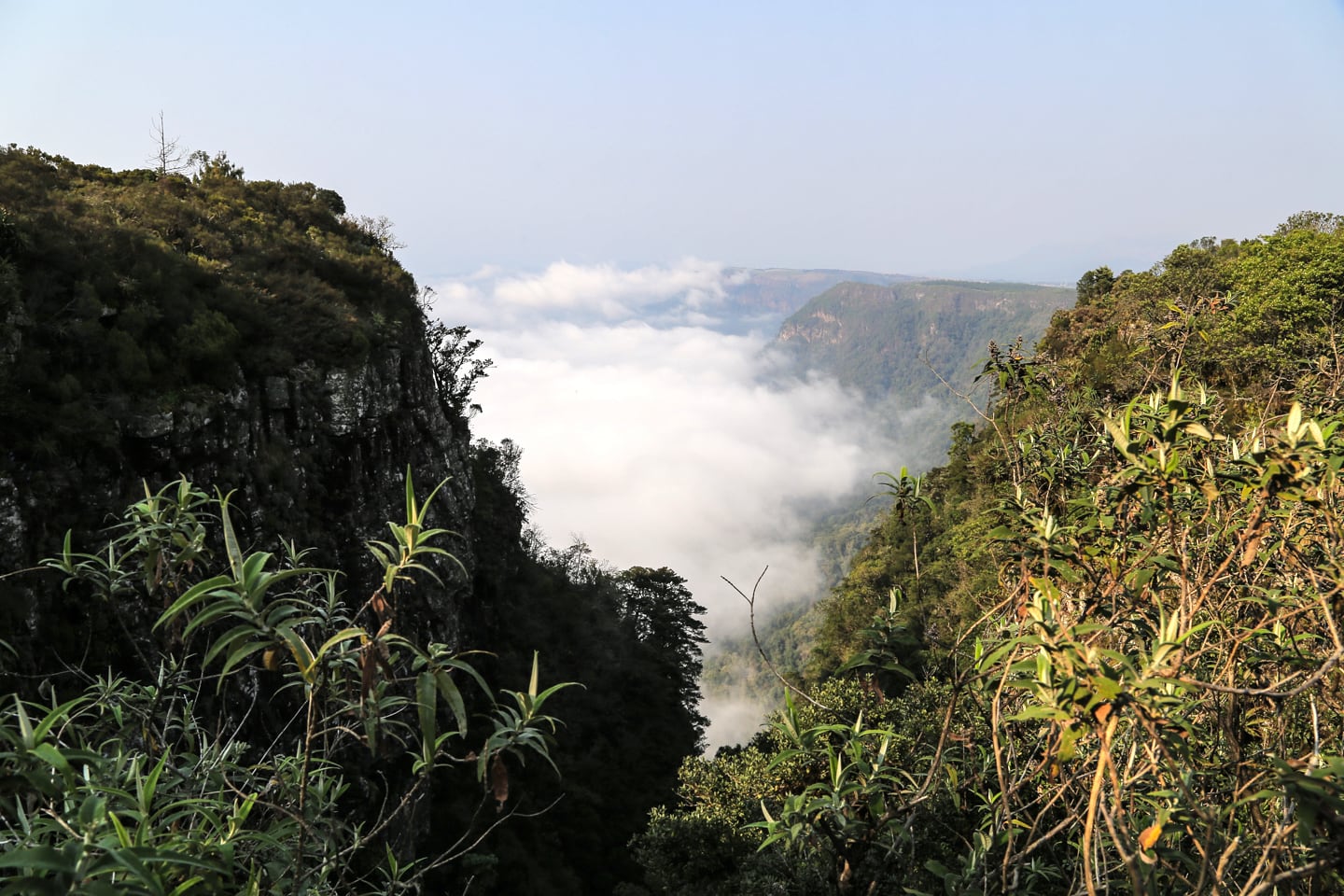
We spent the waning days of September in and around Blyde River Canyon, in the small town of Graskop. On our last day, we took Mini Red on one last scenic ride up to see the Pinnacle (two photos back) and the famed God’s Window (above and below). God’s Window was supposed to be the pinnacle of our South African hiking — a moment we had both anticipated with great excitement for much of the previous month. We had heard nothing but grand adjectives and superlatives describing the scenic view point. Unlike the previous day, this particular morning was as clear as they come…or so it seemed.
We woke up early and headed up the road to the viewpoint, blue sky greeting us the entire way. We parked the car and followed the short trail to the “window.” When we got there, however, the entire valley below was fogged in. All we could do was laugh about the whole thing. We had seen some amazing scenery over the course of our 29 days in South Africa, but always thought that God’s Window would top them all. Now, as we peered out upon pure white, we knew it was time to move on. We had seen what we came to see and were ready for a new adventure. We turned the car south one last time and headed for Nelspruit.
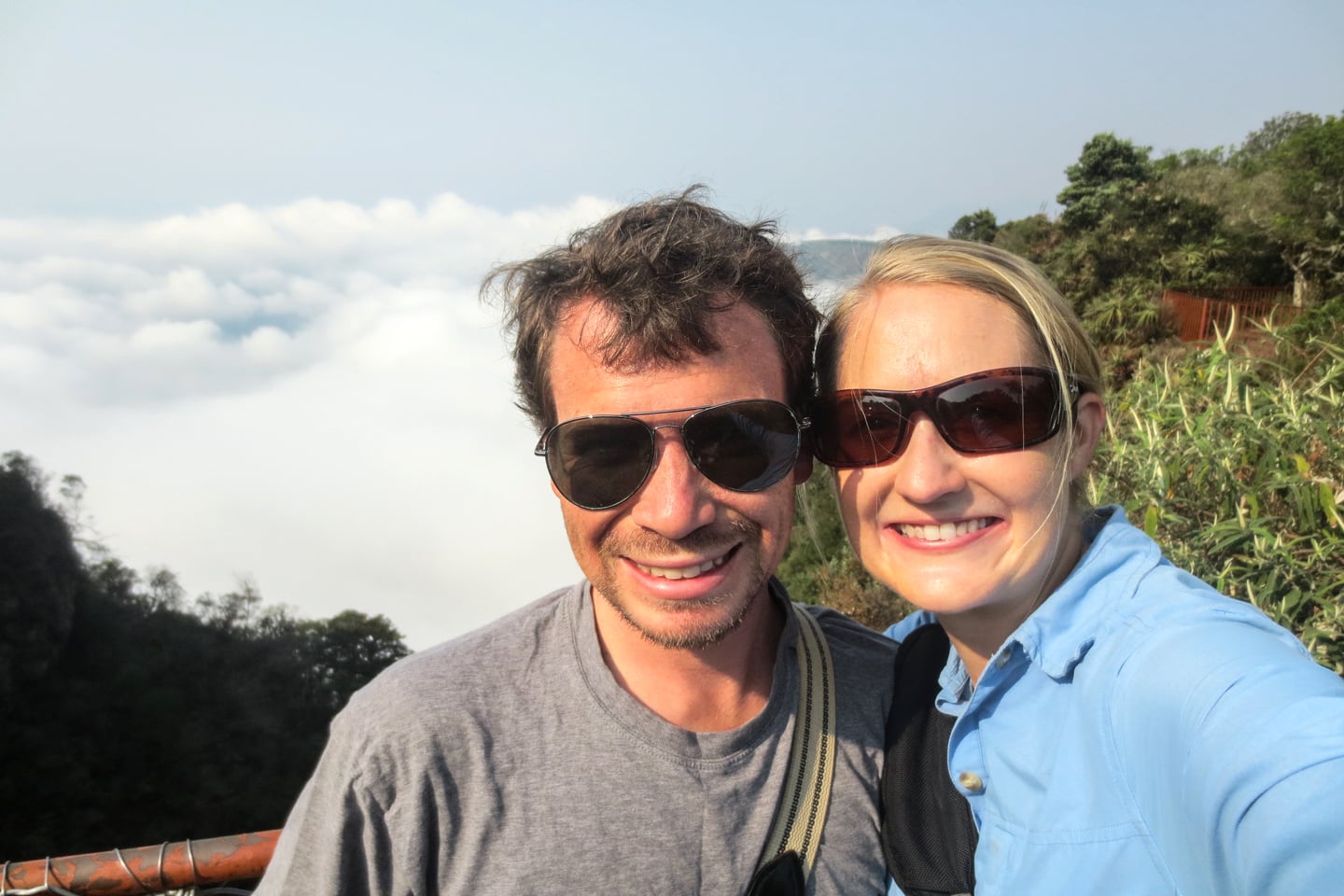
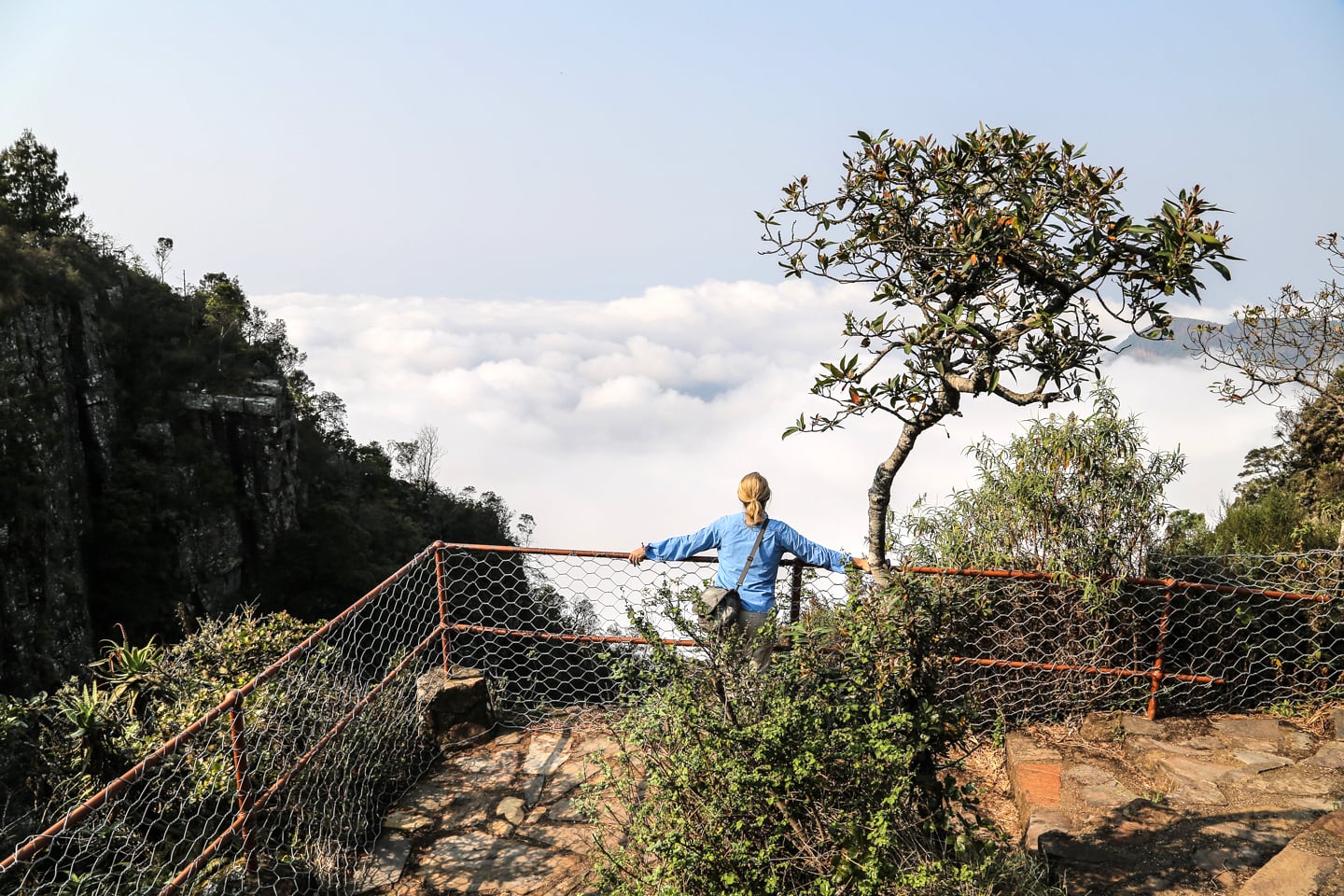
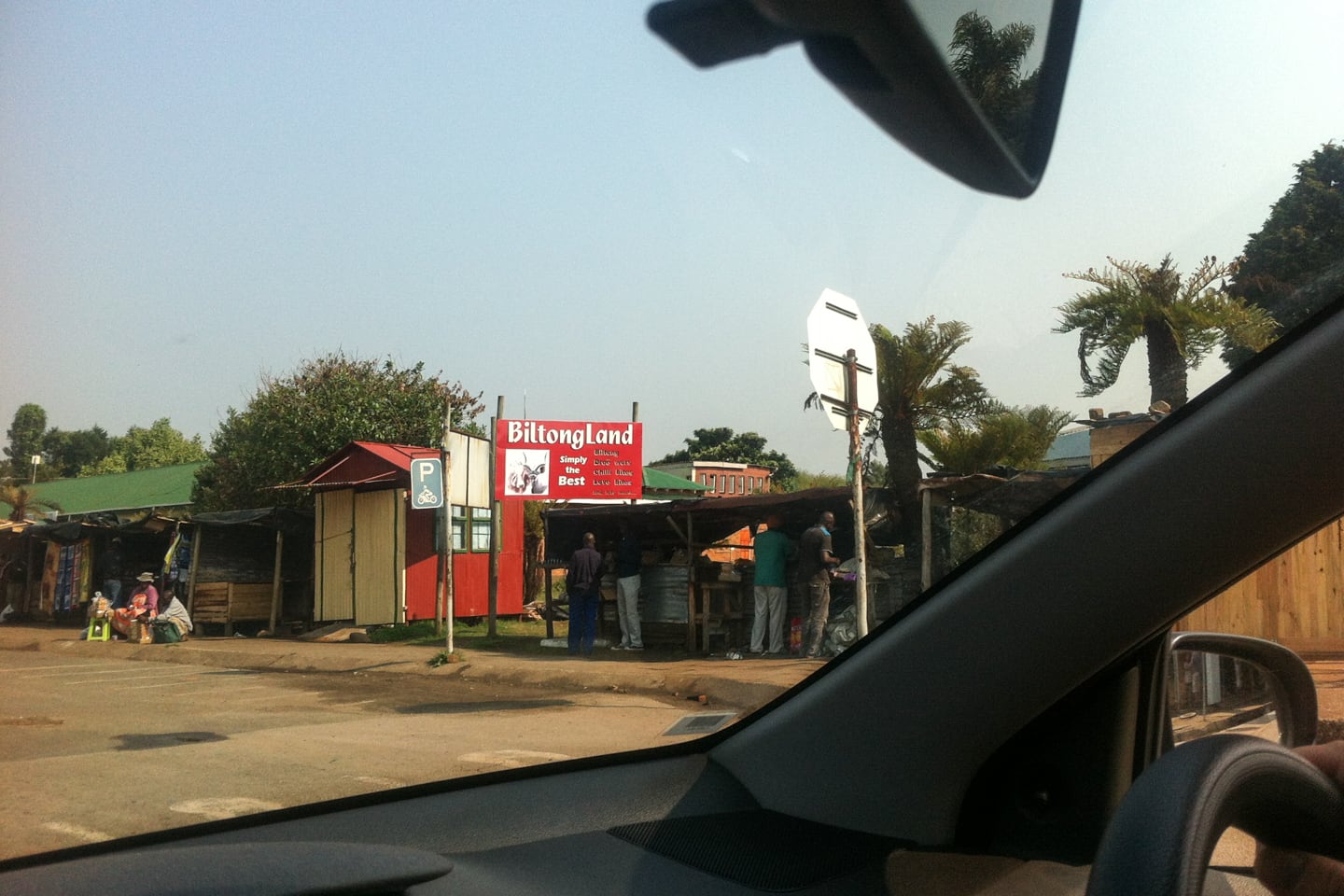
Lori and I got a good chuckle out of this sign every time we’d pass. South Africans really seem to love their biltong (jerky) — there are signs and shops for it everywhere.
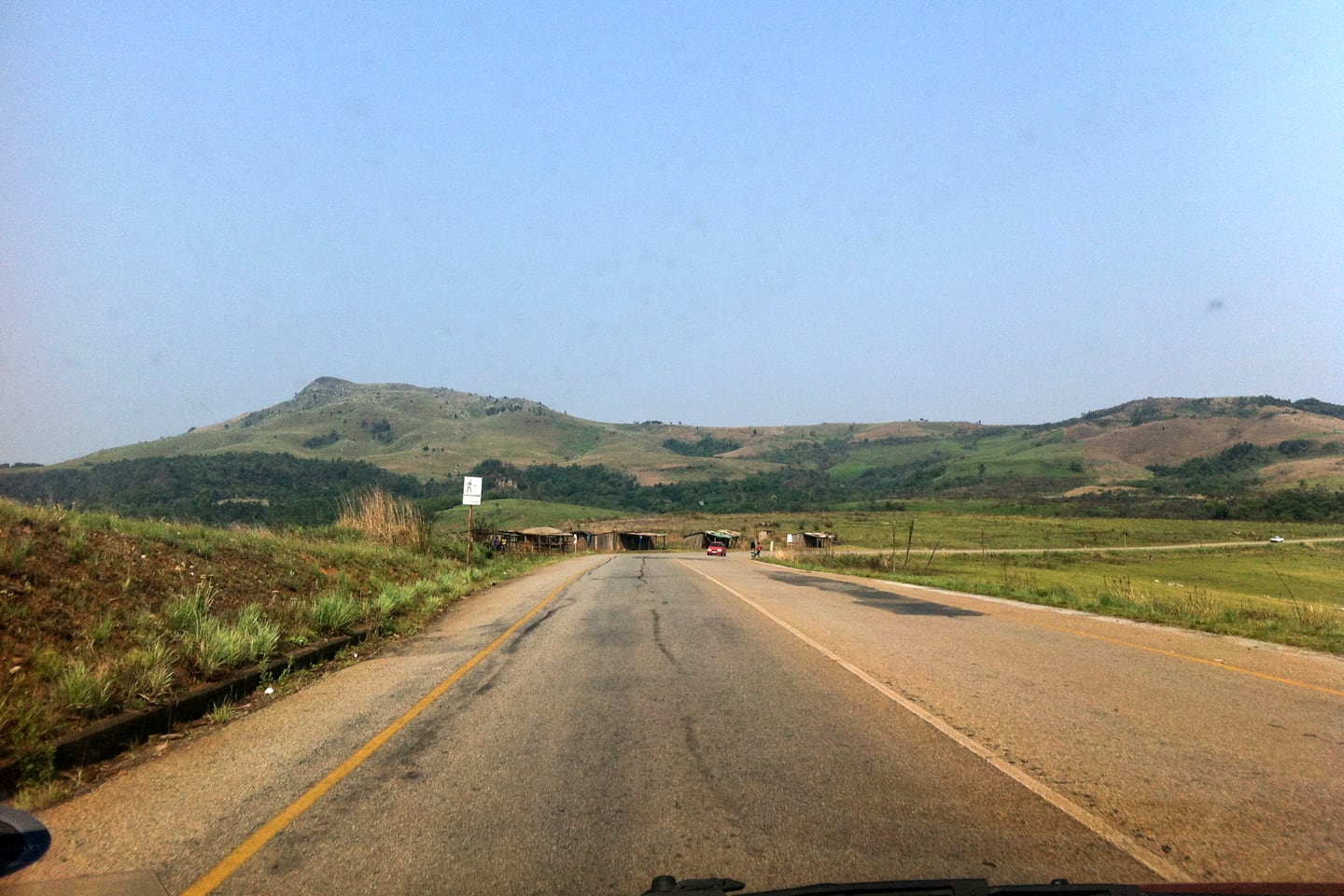
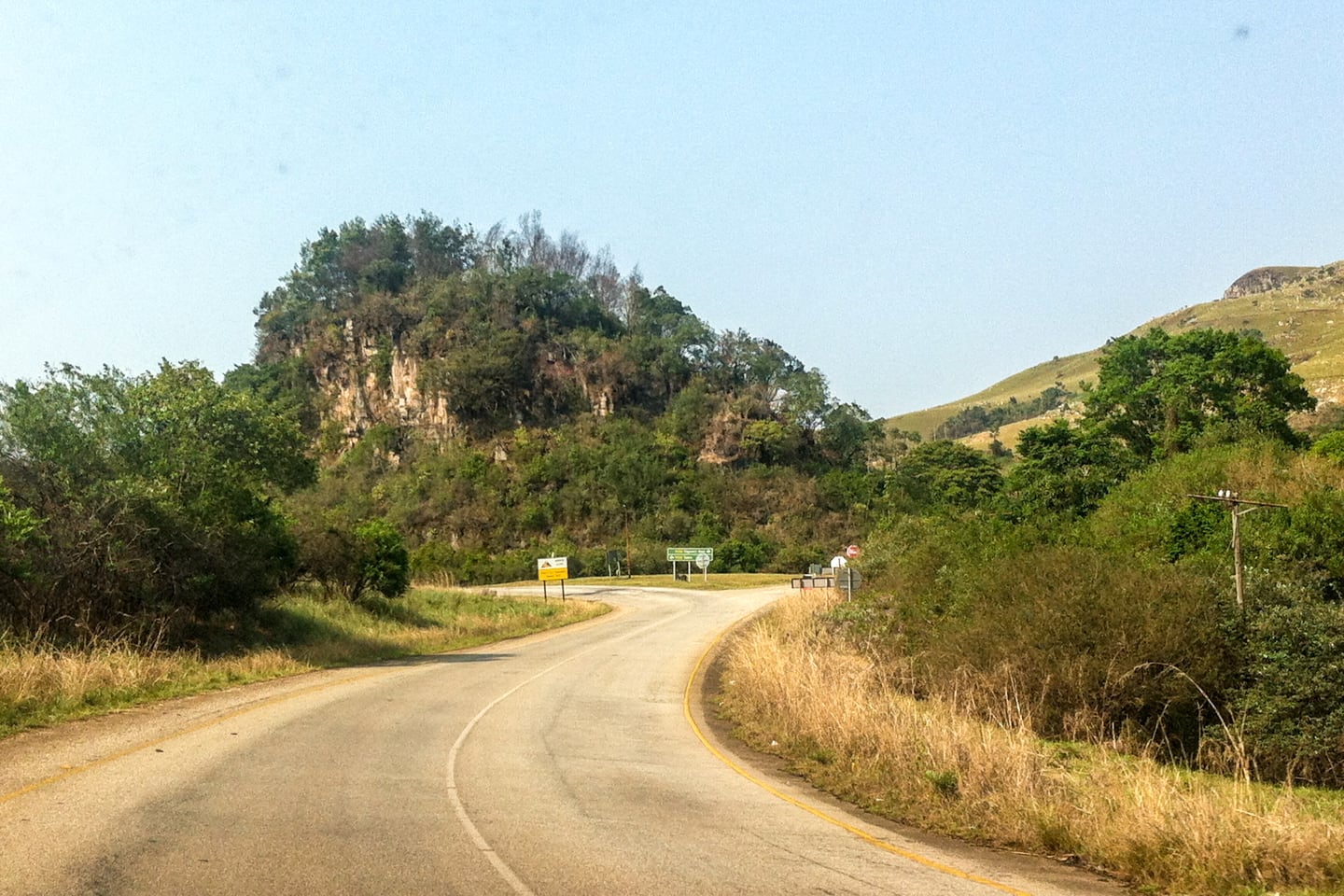
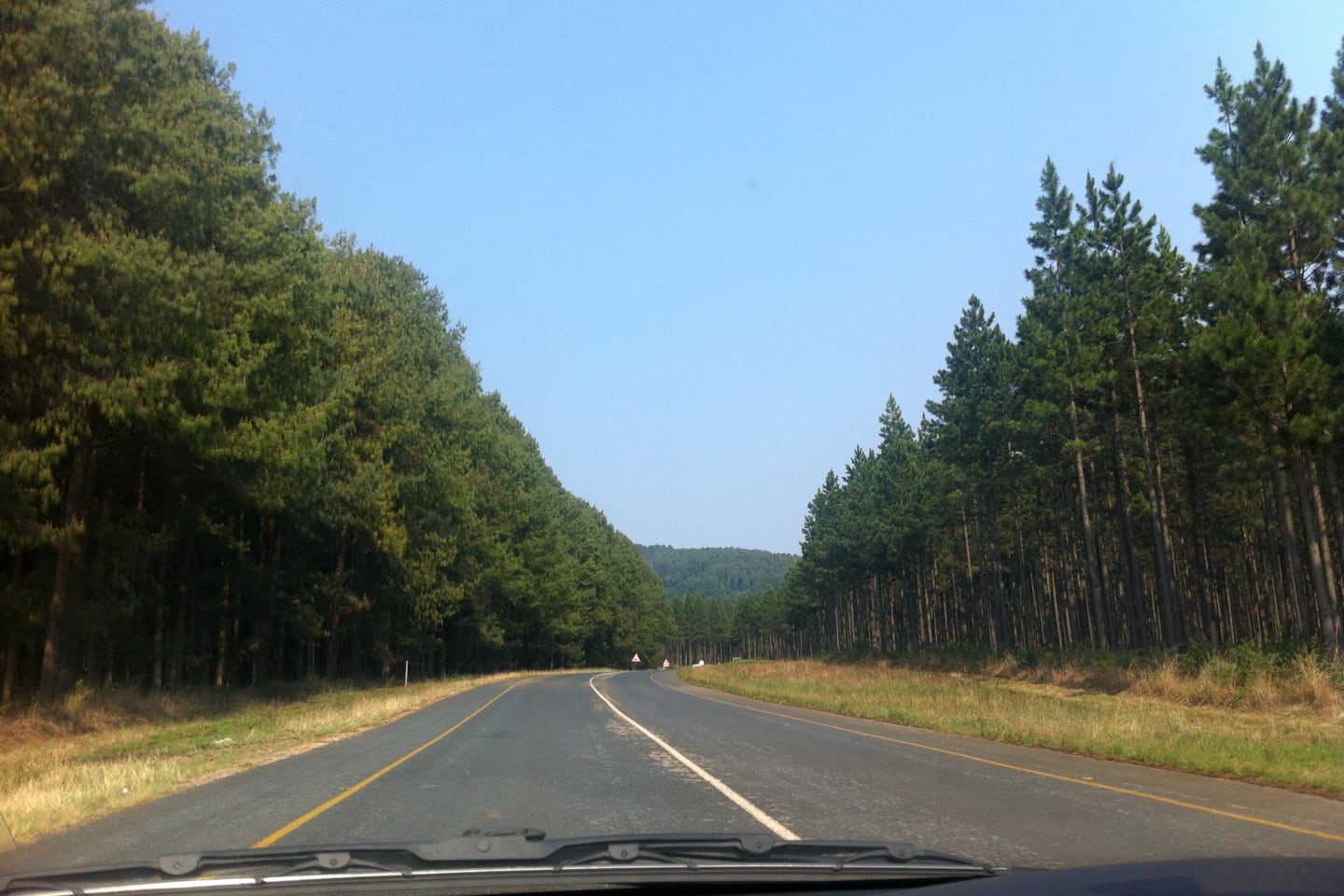
Our South African road trip came to an end at the Protea Hotel in Nelspruit, after covering 2,455 miles (3,951 km) over 23 days (not including our time without the car in Cape Town), an average of 107 miles per day.
Mini Red, our Toyota Etios hatchback rental, served us very well and far exceeded our expectations. Renting from Budget was hassle-free and a great deal (I can finally say this as the final bill just posted to my credit card account). No hidden fees, everything as advertised and described.

=> Overall daily rental cost of US$21.00 after taxes, fees, etc.
=> Fuel economy averaged 37 mpg (16 km/L).
=> The car consumed 66.51 gallons (252 L) from Cape Town to Nelspruit, costing a total of US$311 for petrol.
=> Average price of petrol: US$4.68/gallon.
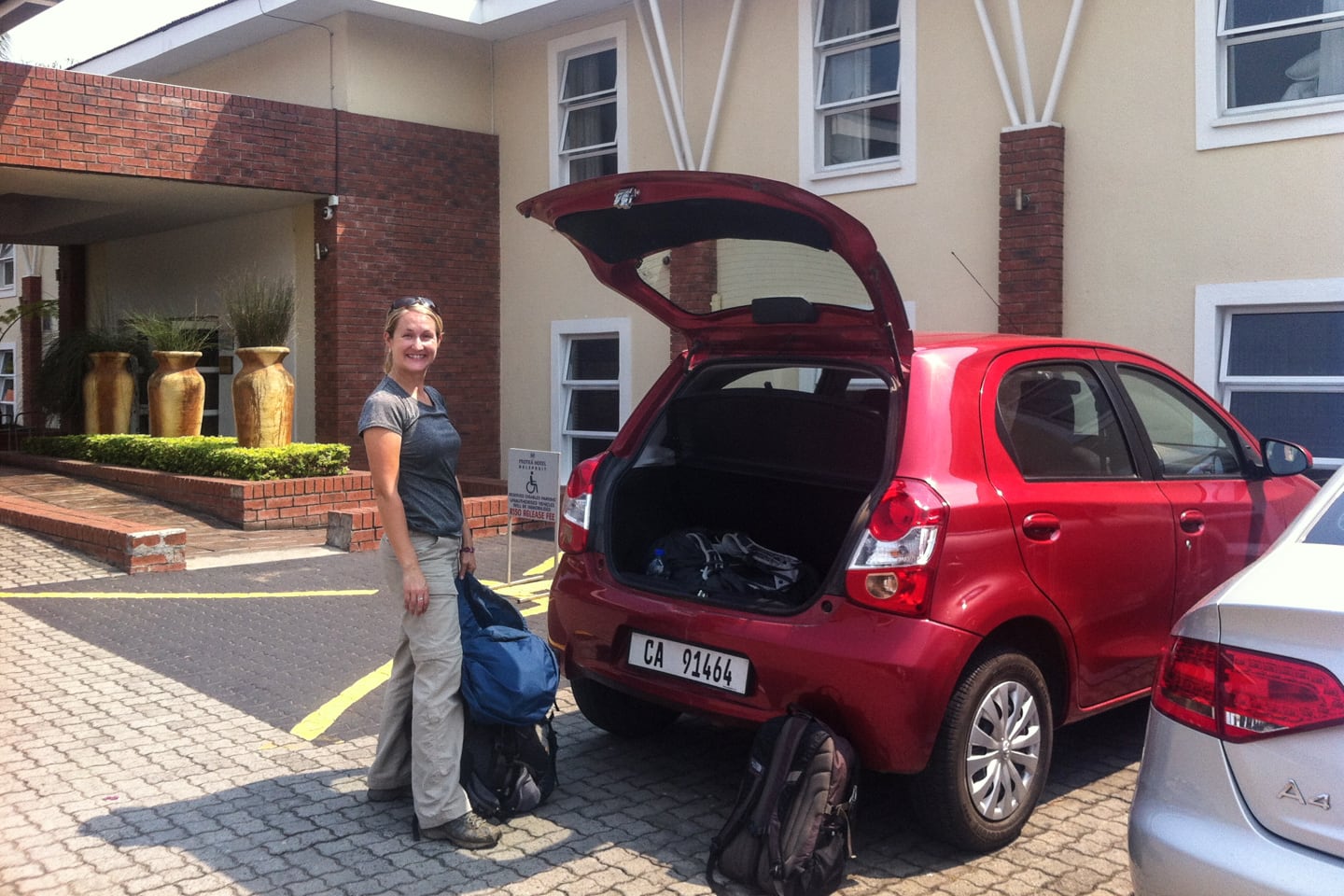
We parked the car at the Protea Hotel, dropped the keys off at the counter inside, and that was that. Anti-climatic for the adventure we had just finished, but that’s generally how these things go.
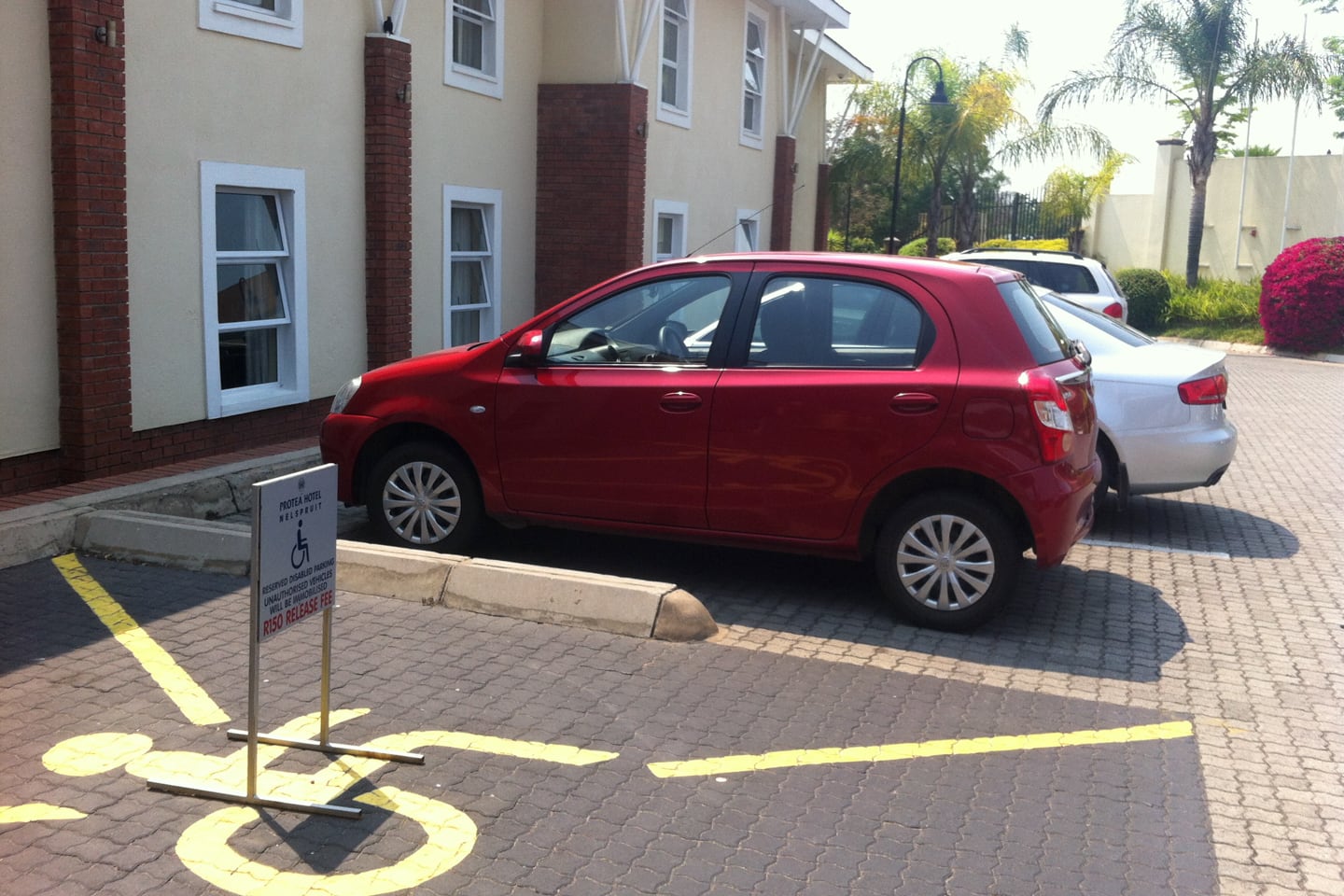
To the surprise of the guards at this fine hotel, we donned our packs and walked out the gate. About a mile up the road, we came to the InterCape bus stop and awaited our ride to Maputo.
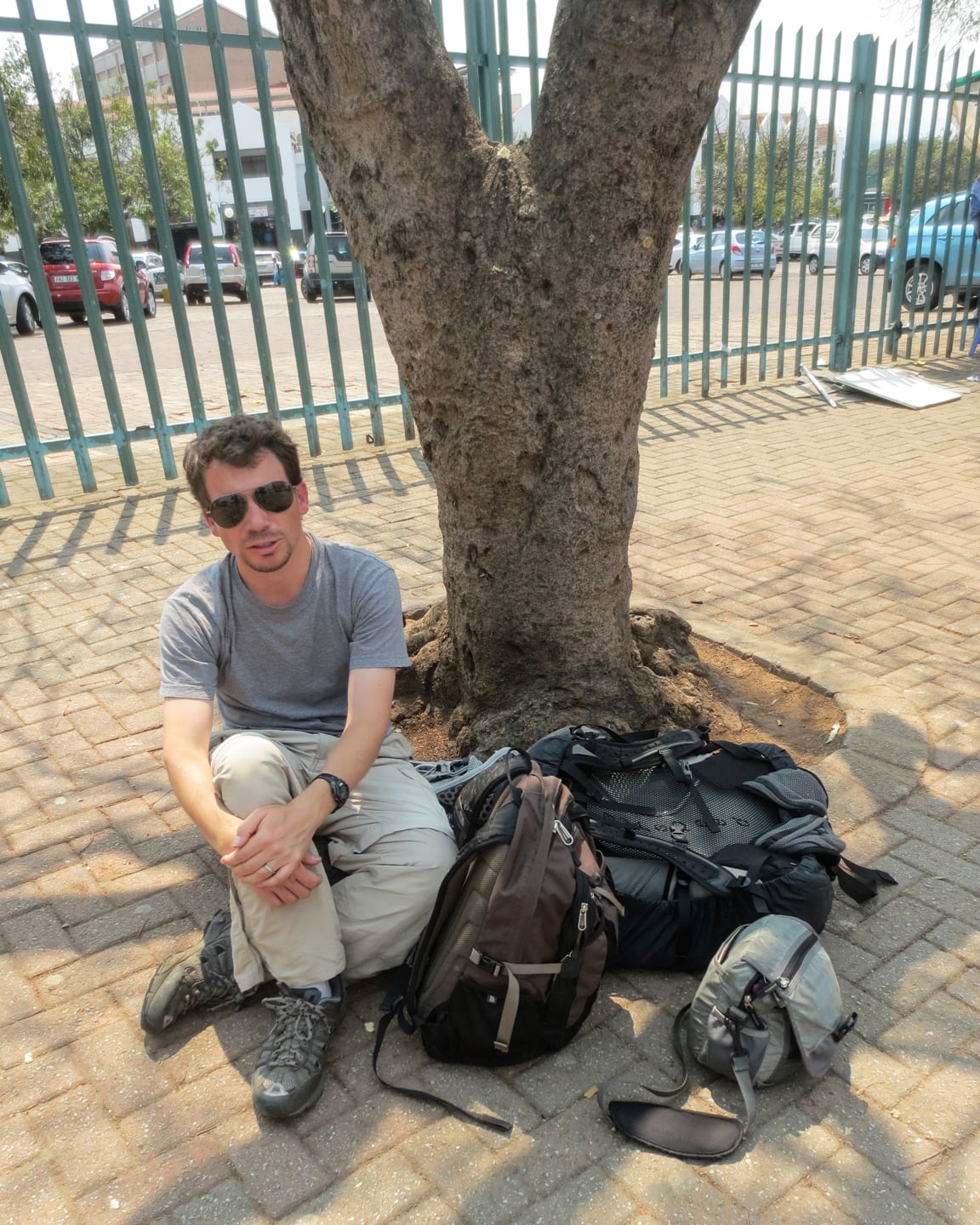
We were early and the bus, in typical Johannesburg-Maputo fashion, was late, so we had a couple of hours of waiting beneath a shade tree. If you ever happen to be taking an east- or westbound InterCape, Greyhound, Translux or City to City bus out of Nelspruit, they all pick up outside of the Promenade Shopping Plaza. All of the bus offices are across the street. Vendors and touts don’t bother you, and the area is relatively safe during daylight hours. If you bought your tickets online, make sure you check in at the office before your bus comes to check-in, verify your credit card and get your tickets.
The InterCape bus finally pulled in about a half hour behind schedule (a bit after 1pm). The ticket-collector put a band around our luggage, gave us the corresponding tickets and put our big backpacks in the trailer.
The trip took about five hours, including the border crossing, and was relatively comfortable. The bus had A/C, which wasn’t ice cold, but kept things fairly cool. We had the very front seats on the upper level, which afforded us excellent views of the road and surroundings. We had curtains on all of our windows, so the sun wasn’t a problem on either side. Admittedly, all of the buses plying this route looked exactly like they did eight years ago, but were still far nicer than most of the buses we’ve traveled on in other parts of the world.
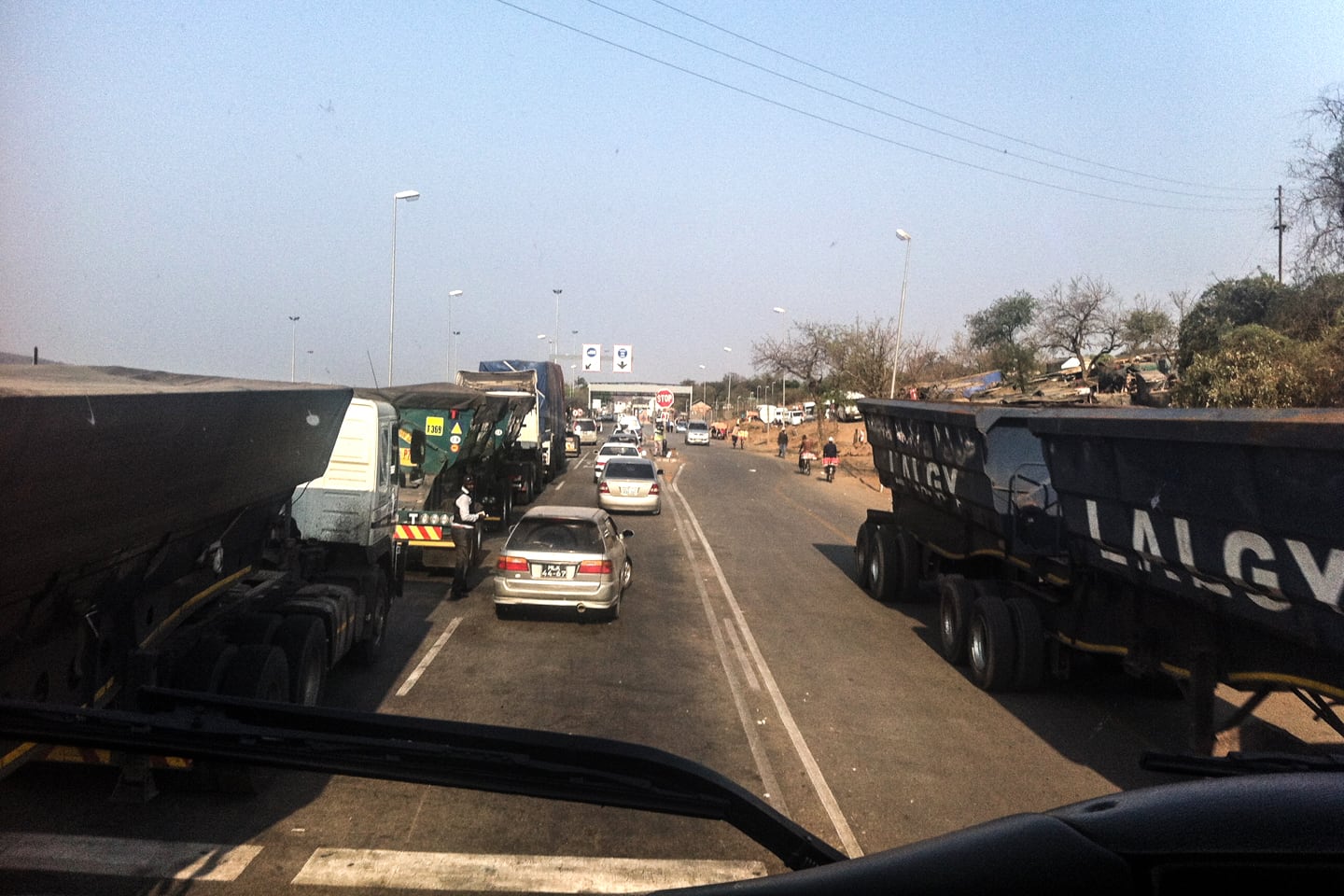
Finally, after 29 days in Africa and a full day of traveling, we reached the Mozambique border crossing about an hour before sunset (~4pm). The crossing was painless. First, we were ushered through the South Africa immigration building to get our exit stamp, then a 5-10 minute walk across the border to the Mozambique immigration building, the same one that I had been detained at eight years prior, but that’s a different story. Oh the memories. We handed our passports (already with visas which we obtained in Washington, DC) to a very disaffected-looking agent who blindly placed one stamp each and motioned us onward.
And then, like that, we were officially in Mozambique.
Our bus and luggage met us a short walk away and we were off and running.
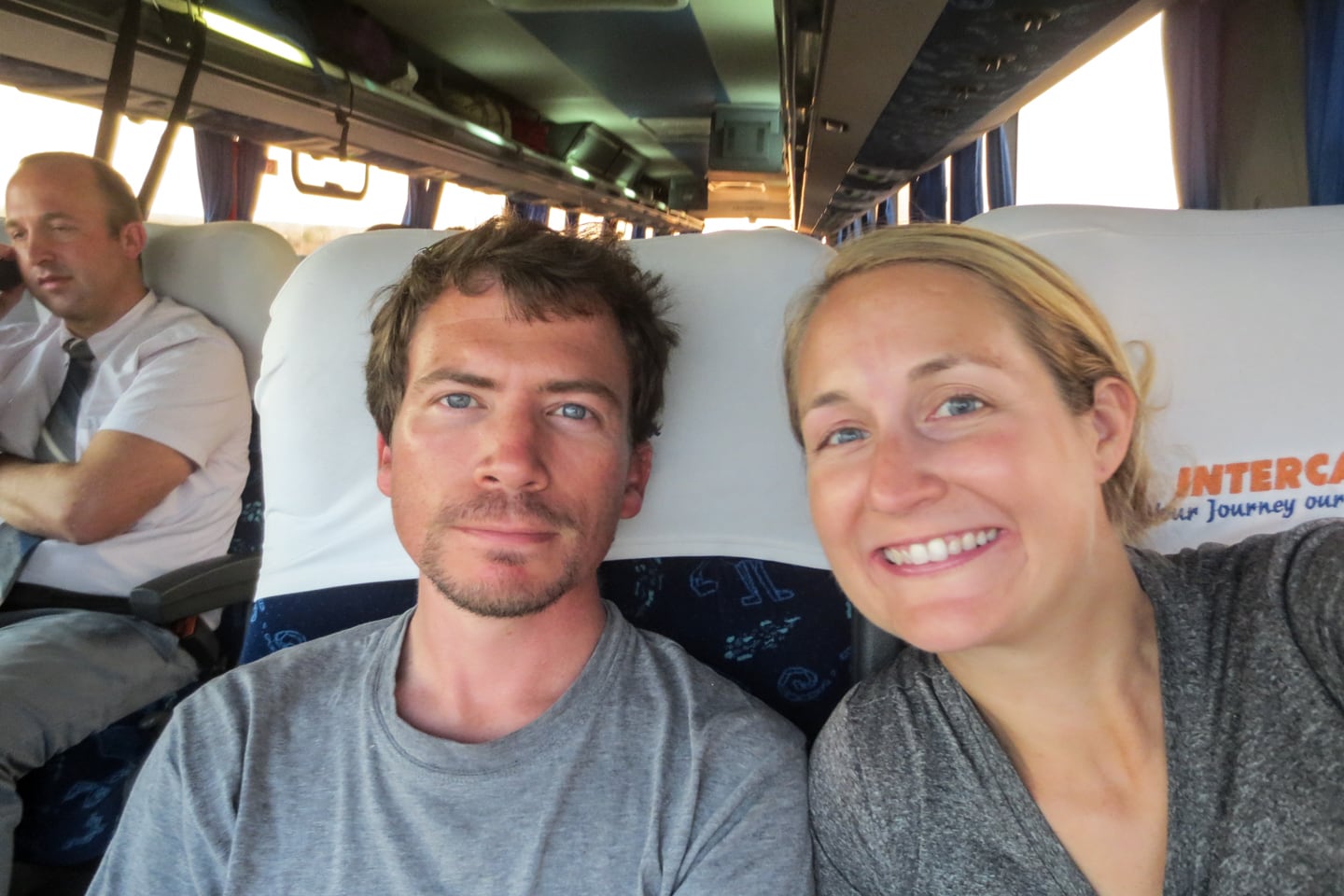
After all of these years, the contrast from South Africa to Mozambique is still stark. Immediately, upon exiting the border area, buildings take on their distinctive Southern Mozambican look — unpainted cinderblock or reed homes, clustered haphazardly together on the hillside. Vendors crowding around the bus, women in capulanas (sarongs) holding sodas, crackers, or fruit in basins over their heads. The landscape is arid and dusty. The stretch to Matola, the large urban suburb outside of Maputo, seemed much longer than I remember. Perhaps it was anticipation. Perhaps it was wanting to be finished with a long travel day.
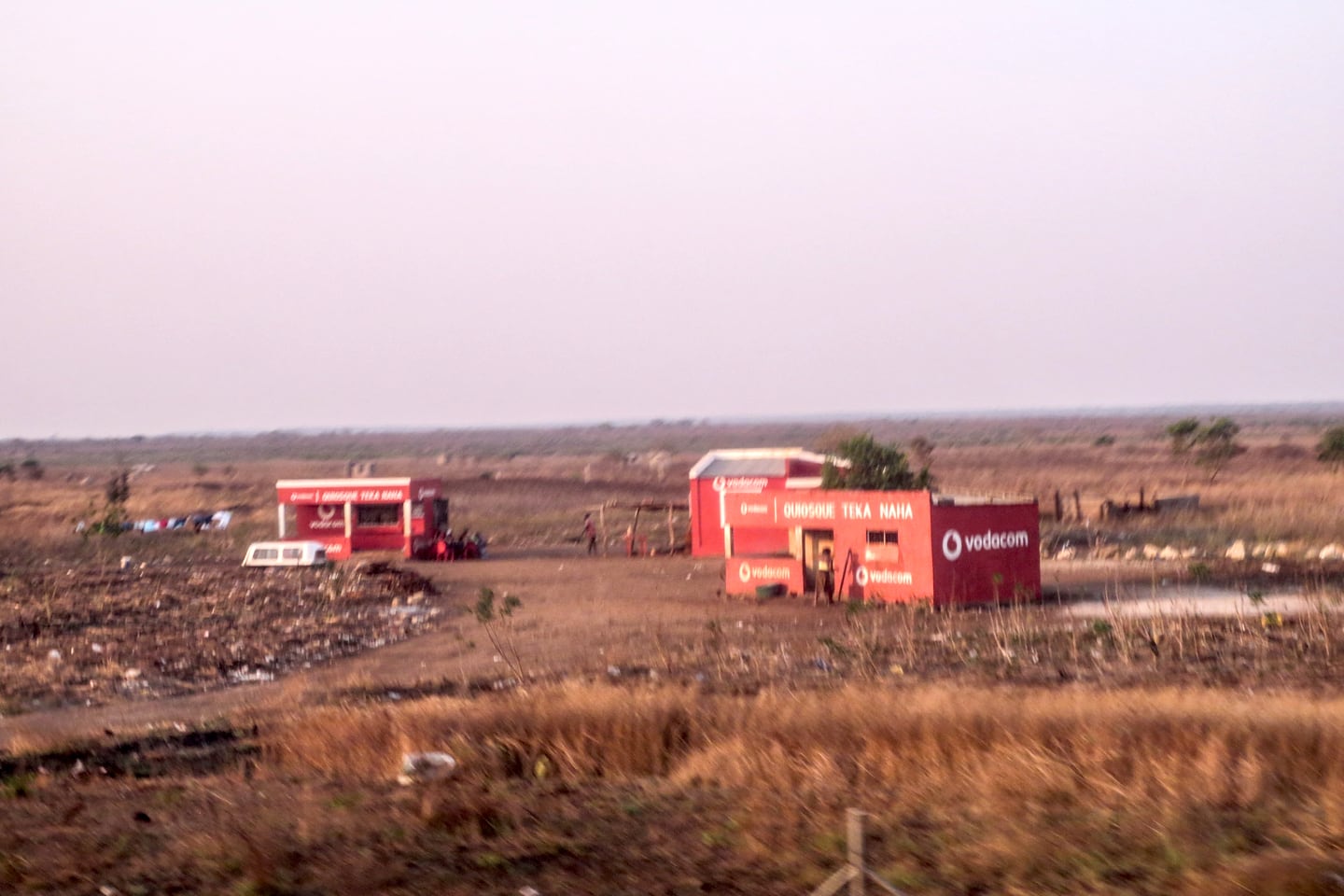
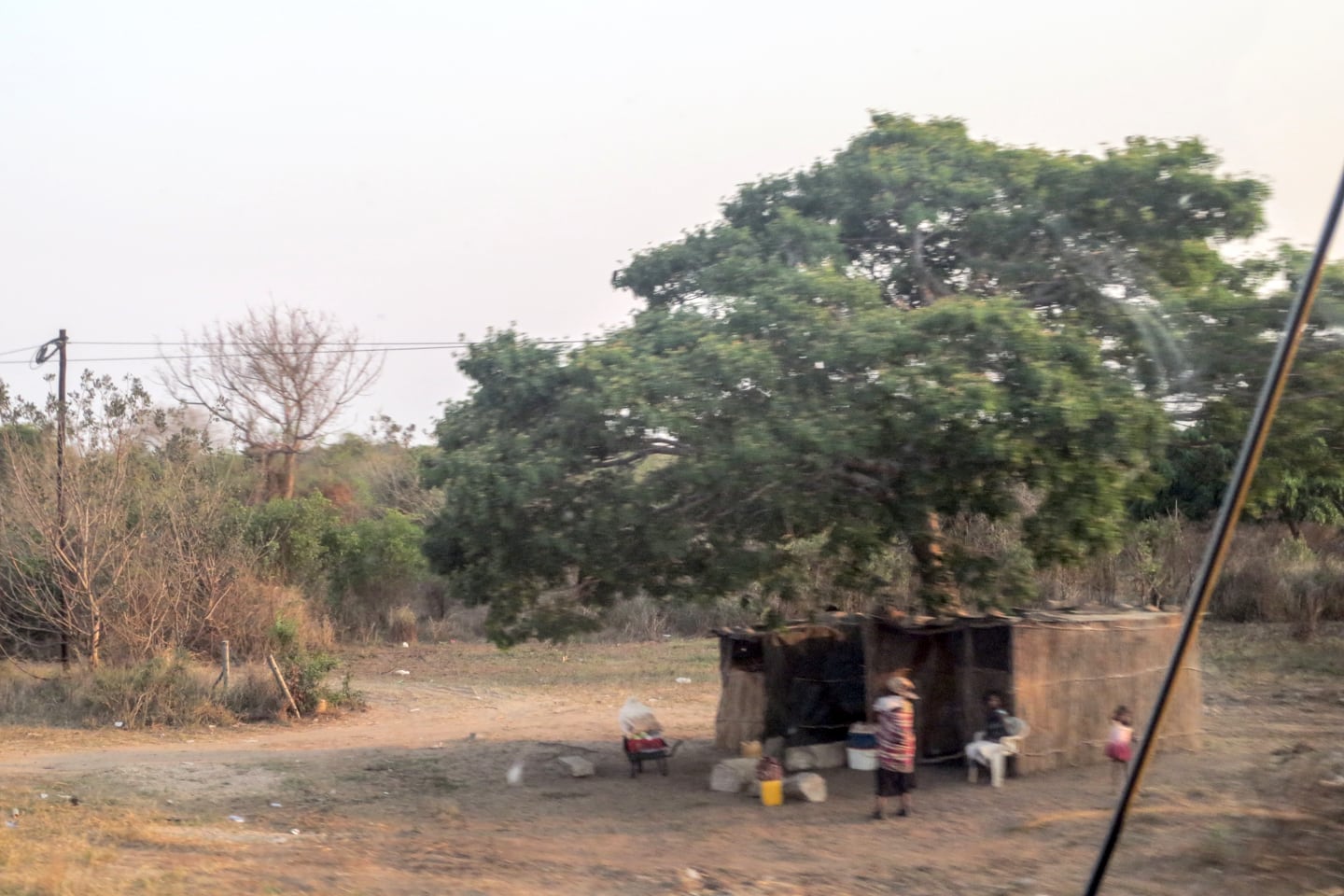
It was eye-opening for Lori. She would make observations regarding basic living conditions in rural South Africa and I couldn’t often help but say, “just you wait.”
Mozambique was the first country in Africa I ever visited, and the only one I’ve lived in — for 27 months. Long months. Not–ex-pat working for an NGO living in a nice cement house with AC in Maputo–months. But long, hot, hard, isolating, challenging months, without electricity, running water, internet, computer, vehicle, other Westerners in my town. I lived in a small reed house. I cooked my own food from scratch every day because I didn’t have a fridge. I walked everywhere or took public minibus taxis (chapas). I traveled 2-3 hours to the provincial capital by chapa and boat every other week to check my email. I bathed with a bucket and cup with hand-drawn water from a well. I went to the bathroom in a reed pit toilet. I read in the evening by karosene lantern light. I did most of this for over two years.
Hundreds of millions of people on this planet do these things every day too. But it seems weird, in some ways unbelievable, particularly to Americans, because, well, most of us don’t do these things. Despite staggering development and poverty indicators and statistics, most South Africans don’t live this way anymore either (Most Americans might find this statement unbelievable as well, but South Africa is simply not indicative of the rest of the continent — it certainly has numerous challenges of its own, but in many ways South Africa is far and away the exception rather than the norm. The vast majority of the poorest in South Africa have some access to a running tap, live in sturdier concrete or mud houses and have access to electricity. The working class and middle class these days live more along the standards of their American counterparts. This was simply not true for the vast majority of Mozambicans I came in contact with every day. I wondered if this would still be the case. Our first hour back in Moz indicated that it might be.
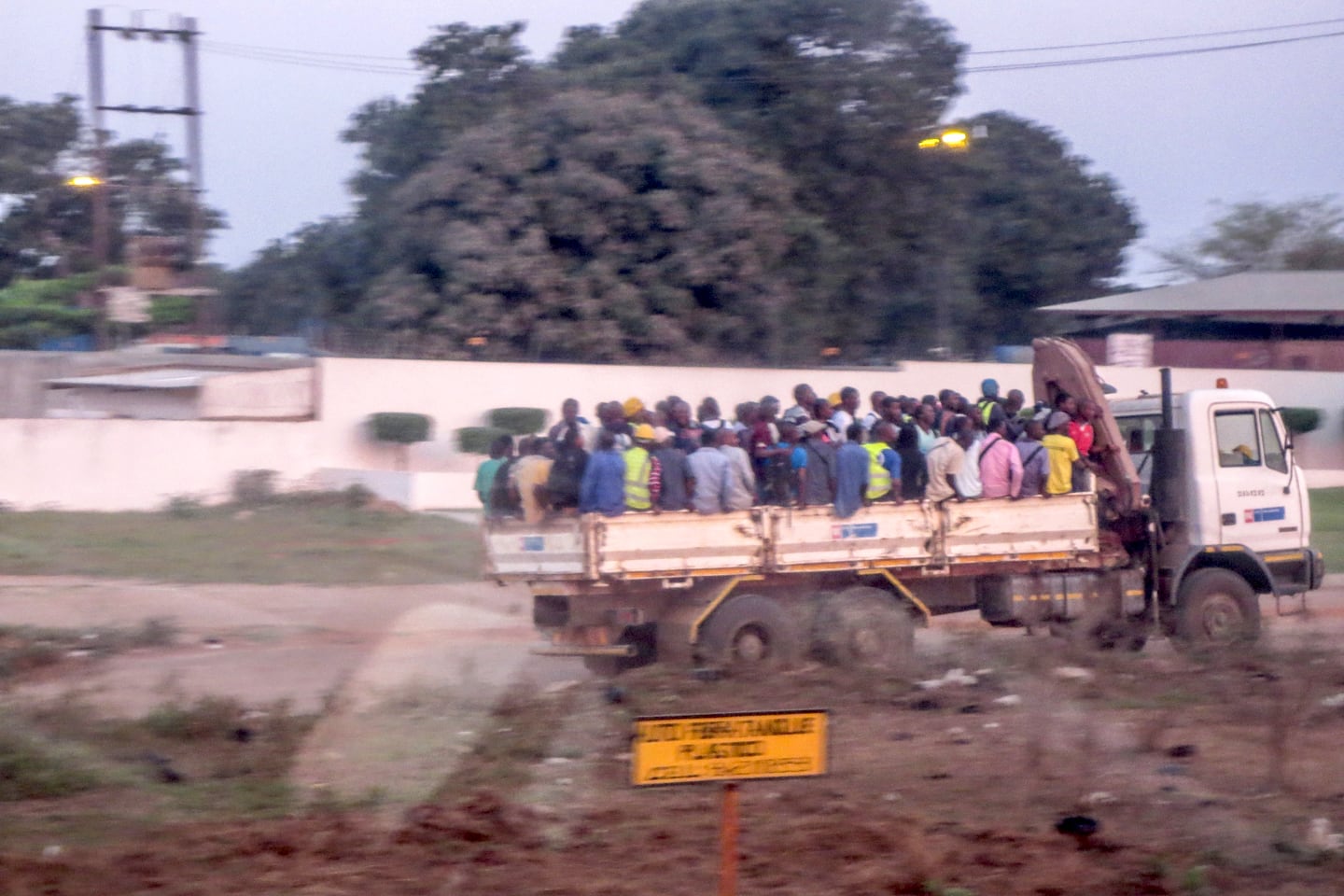
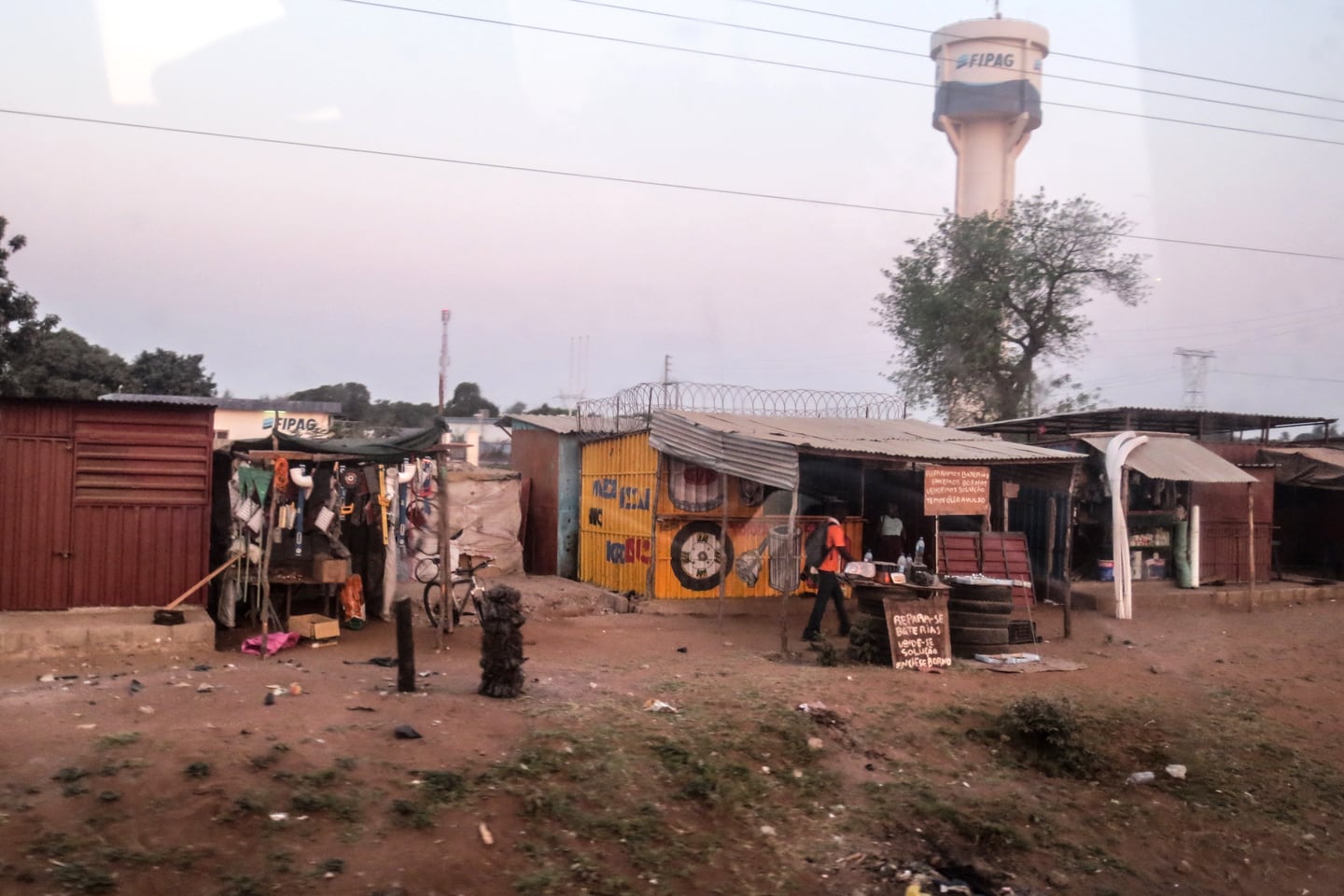
It all looked and felt incredibly familiar. During our 29 days in South Africa, I never felt at home. I never felt like I understood the culture and found it difficult to access on any meaningful level. For one, I didn’t know the language. I speak English, of course, but to communicate on any meaningful level, I felt that Xhosa, Zulu or Afrikaans would have served me better. English felt like the language of the outsider. I also didn’t have a good grasp on the South African national mentality, the political or cultural pulse. To make matters worse, Lori and I are white, which colors our interactions automatically, whether we’re speaking with a white person, black person or anyone in-between. By virtue of being blatantly caucasian, there often seemed to be an assumption by whites (especially Afrikaaners) that we could relate to their newfound troubles and whoas in this new Democratic South Africa, and an automatic assumption by many blacks that we disagreed with their ideals, philosophies or cultural preferences.
Yet, all of that vanished into thin air the moment we crossed the border. I felt I was back in a place I knew well, with people I knew how to connect with on a more meaningful level. Common expressions, popular culture, recording artists, political challenges, geographical and cultural divisions and opportunities, food, language and dialects, the rhythm of the day, and my place in it all. It was comforting, exciting and terrifying. What if things had changed? What if I didn’t recognize the things I loved about this place? What if Mozambicans no longer exhibited the humility, generosity and kindness I had remembered them for, but decided to join the ranks of the embittered, jaded and greedy masses that occupy so much of the world today?
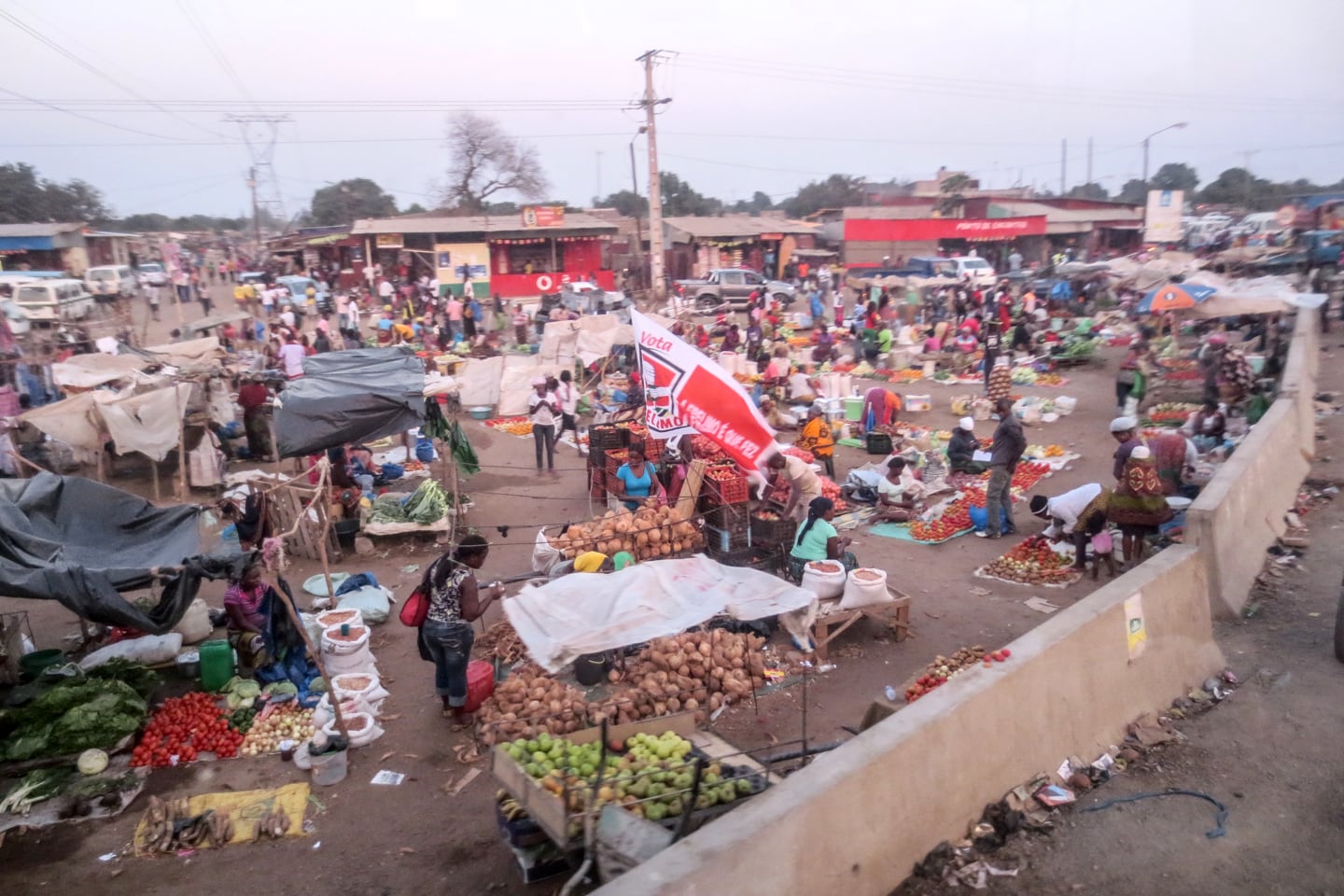
But for now, those questions could wait. I was back in Mozambique. After nearly a decade, I was rolling back into Maputo.
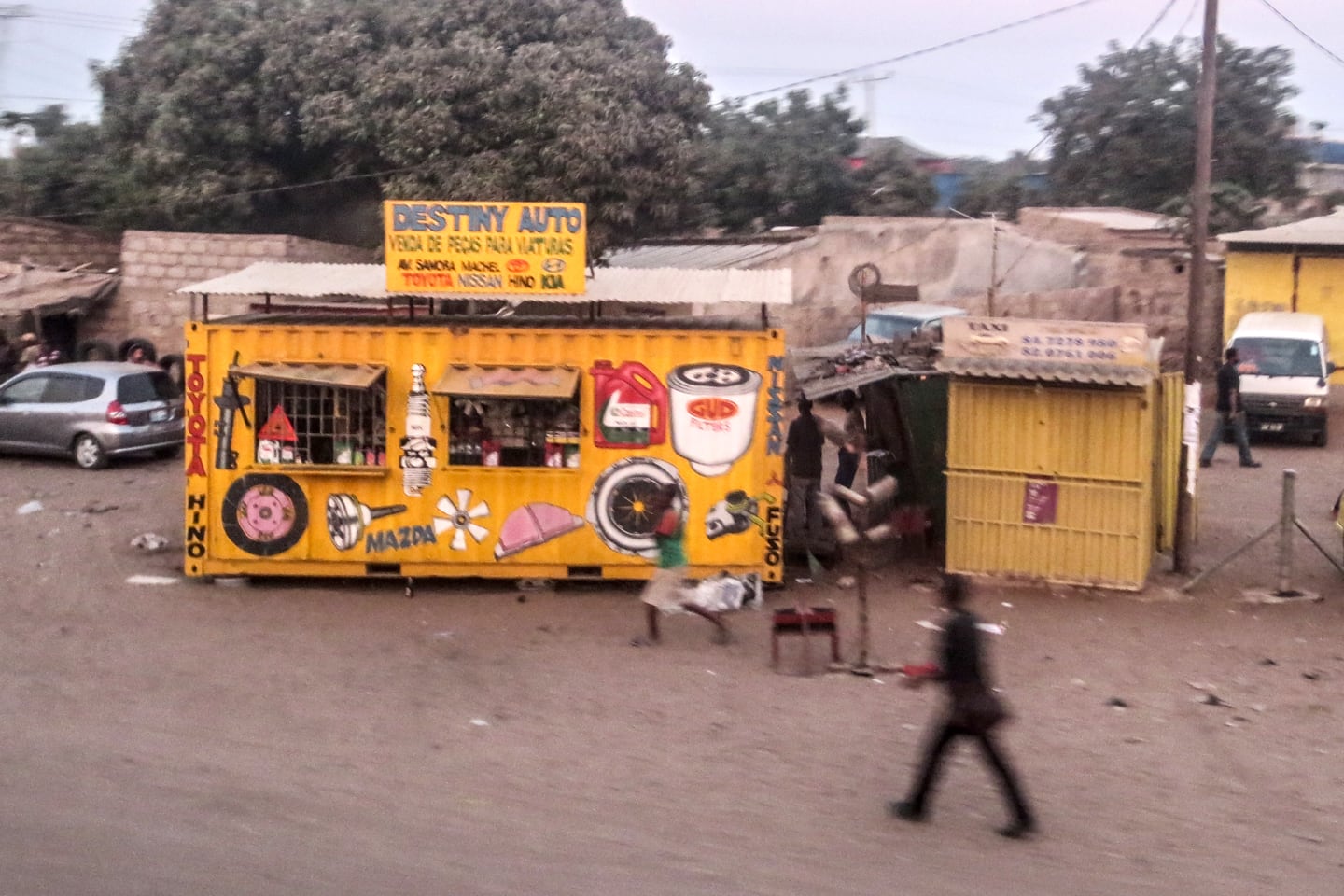
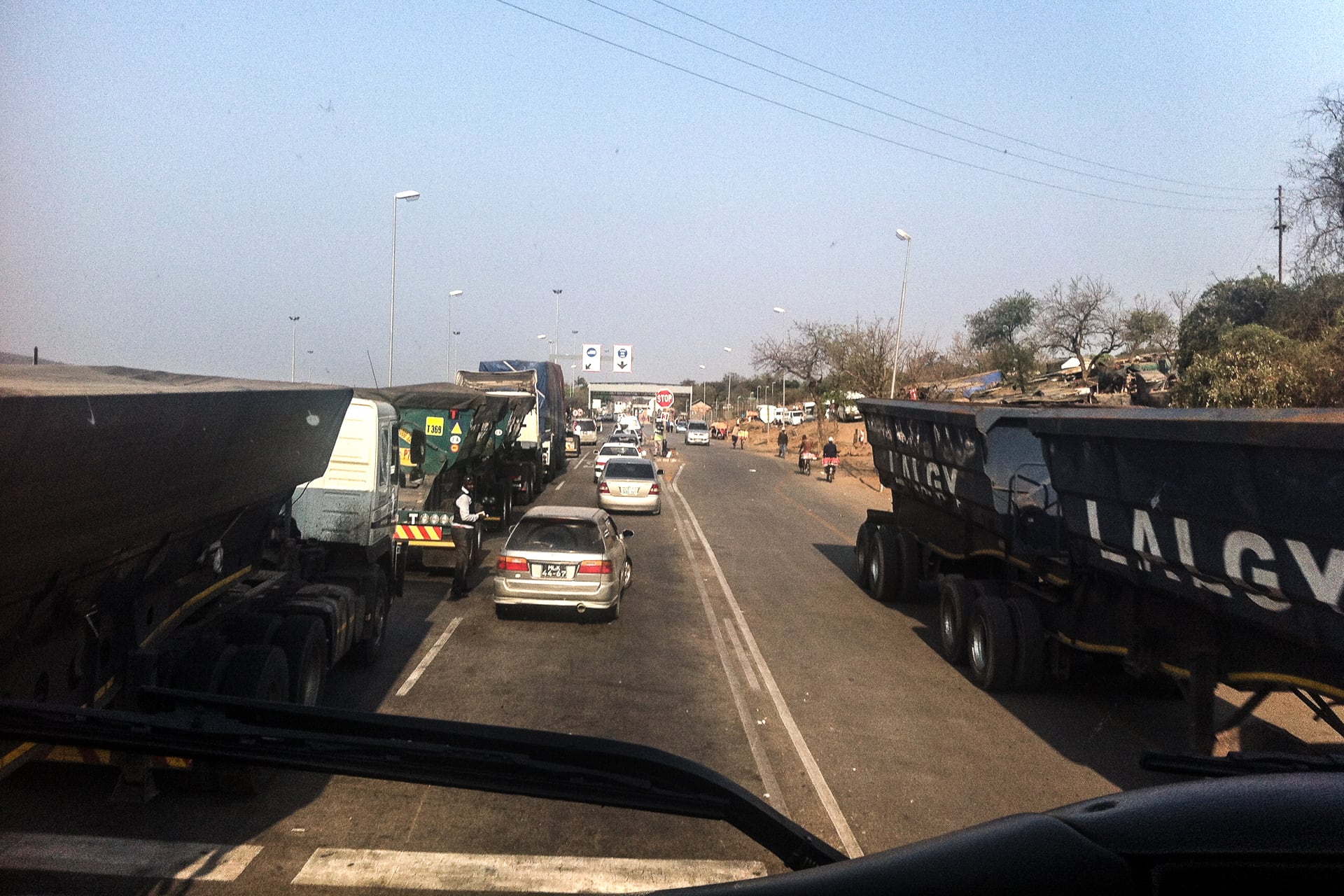
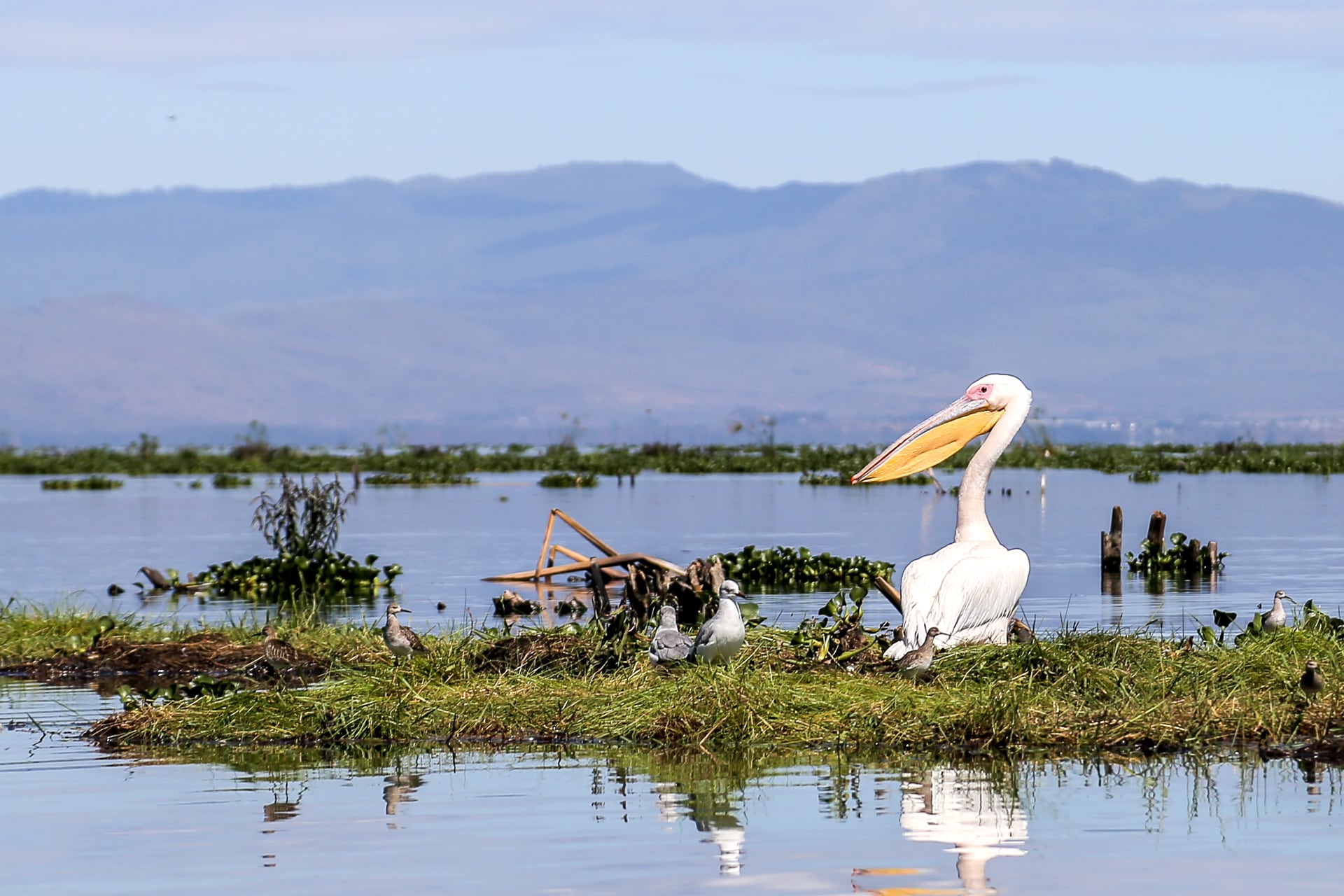
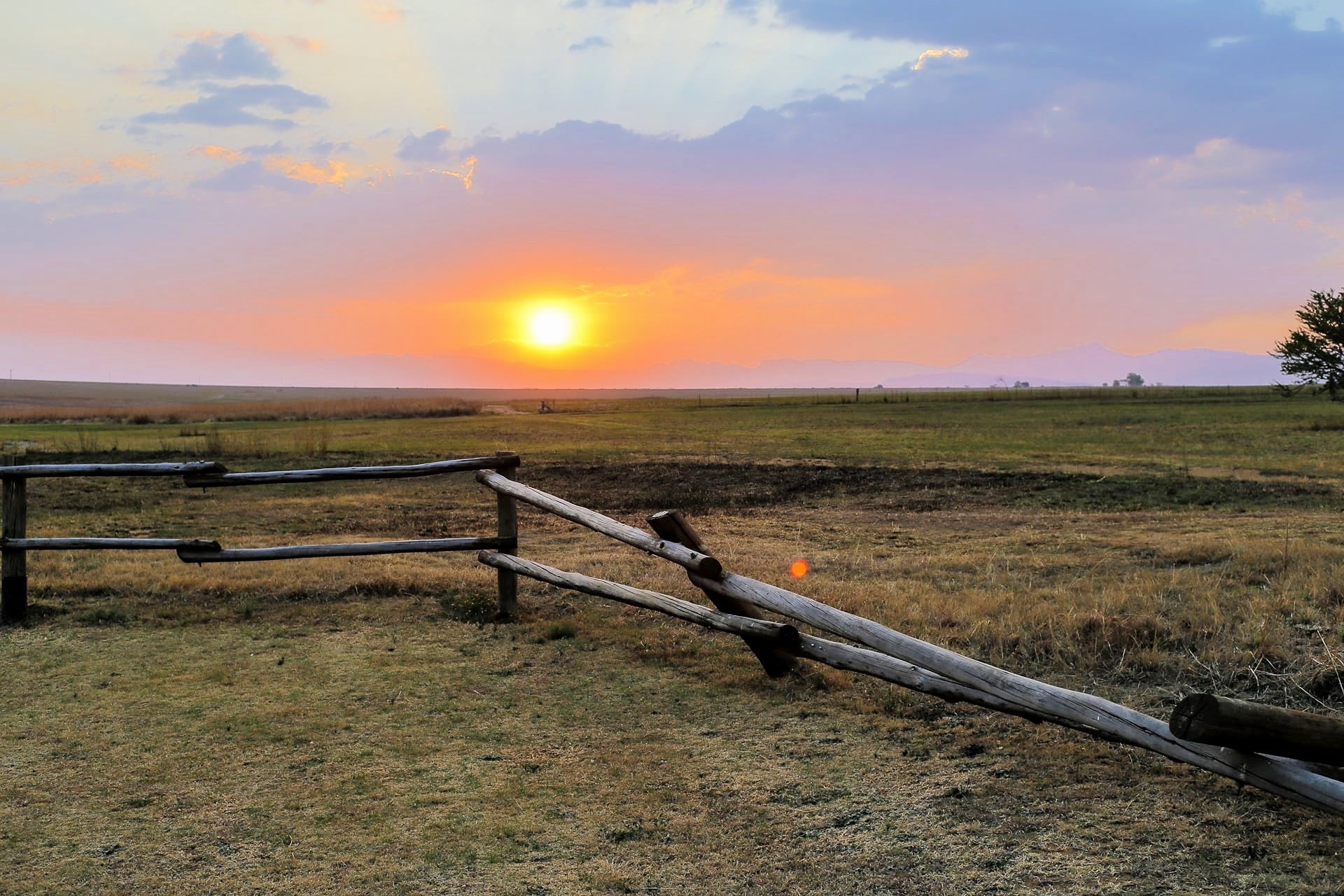
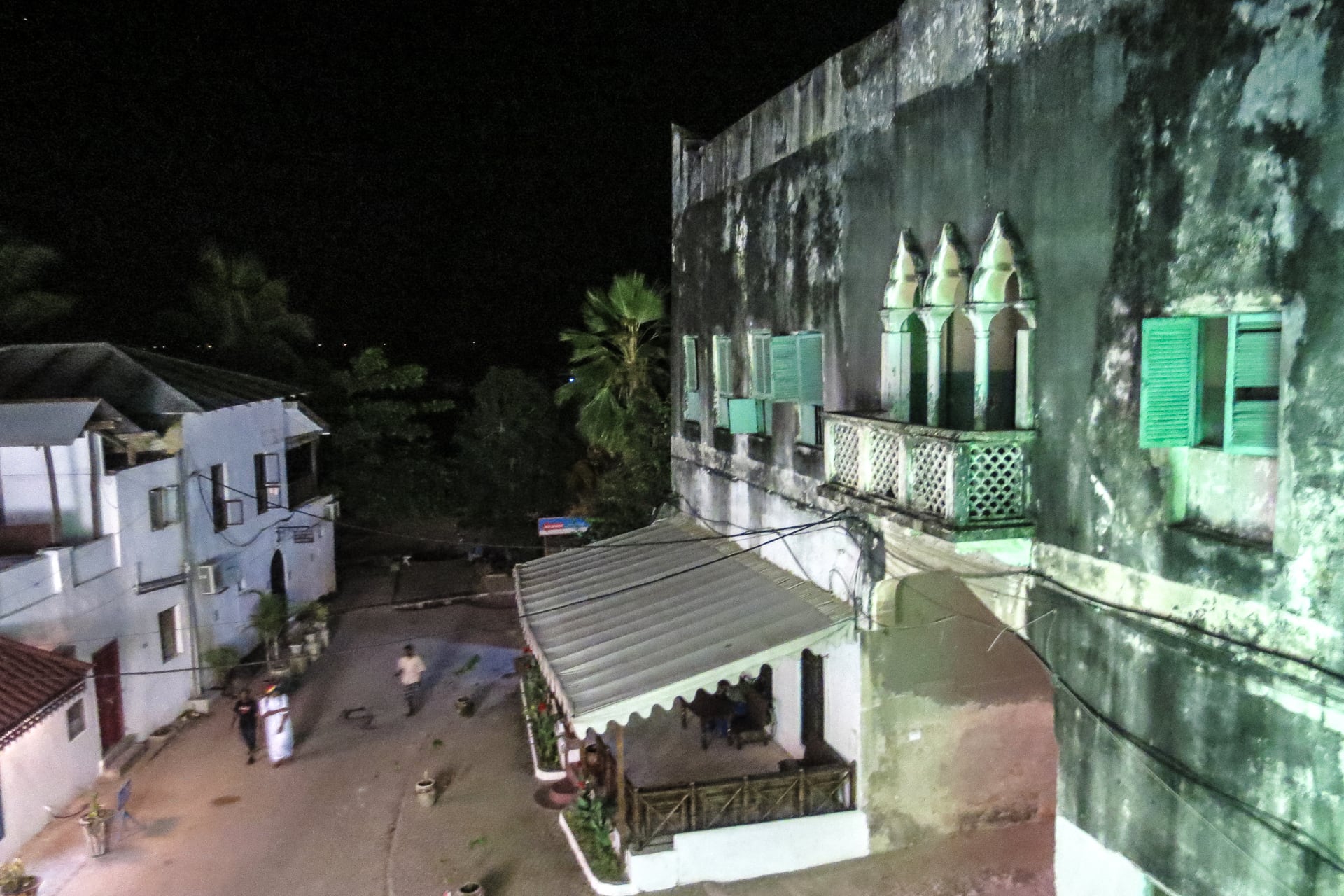
So interesting, so well said, I felt like I was there experiencing it all too. Another world indeed !!! GM/T 🙂
One of my most amazing vacations. I want more, more,
more… I can’t wait to hear Lori’s side.